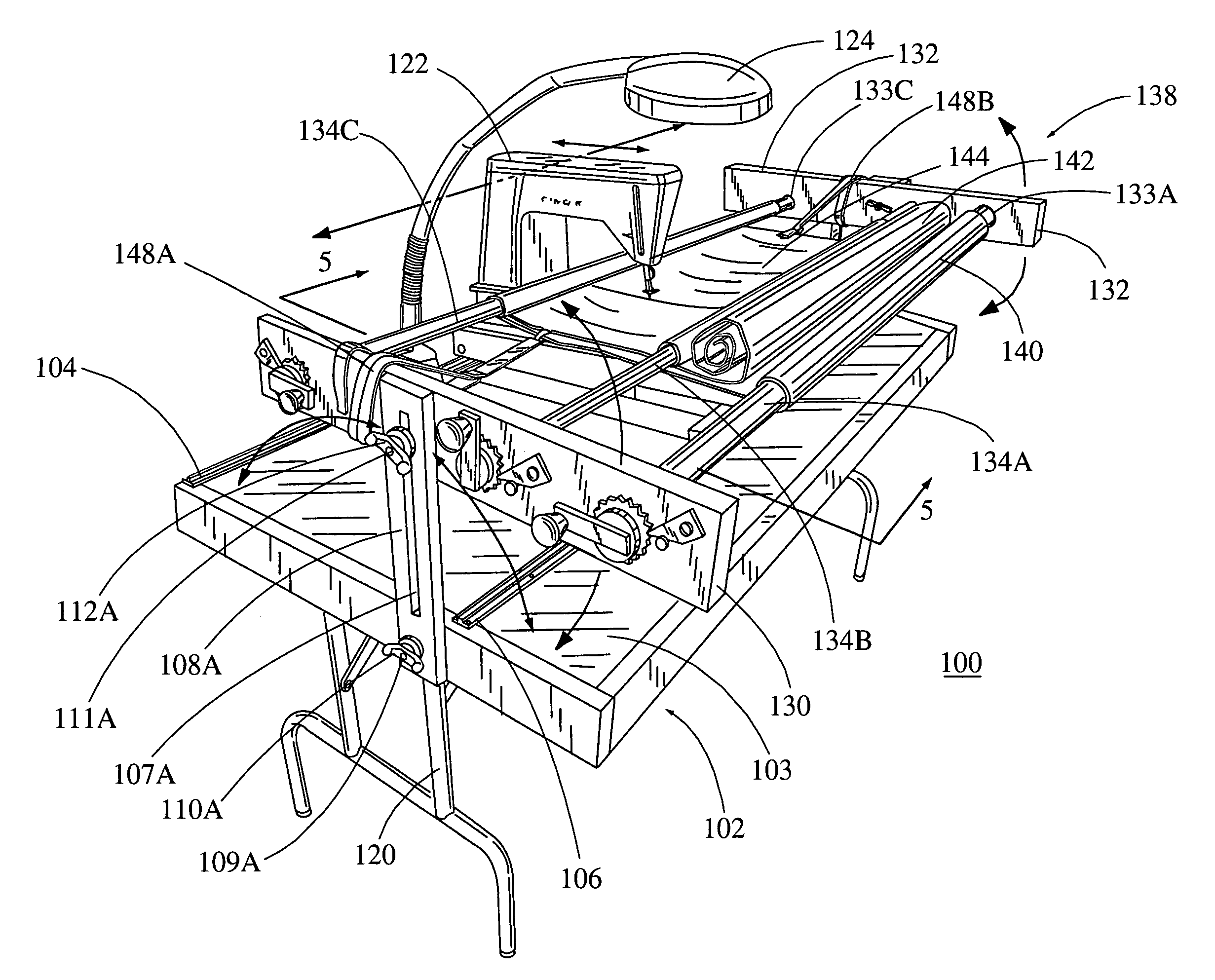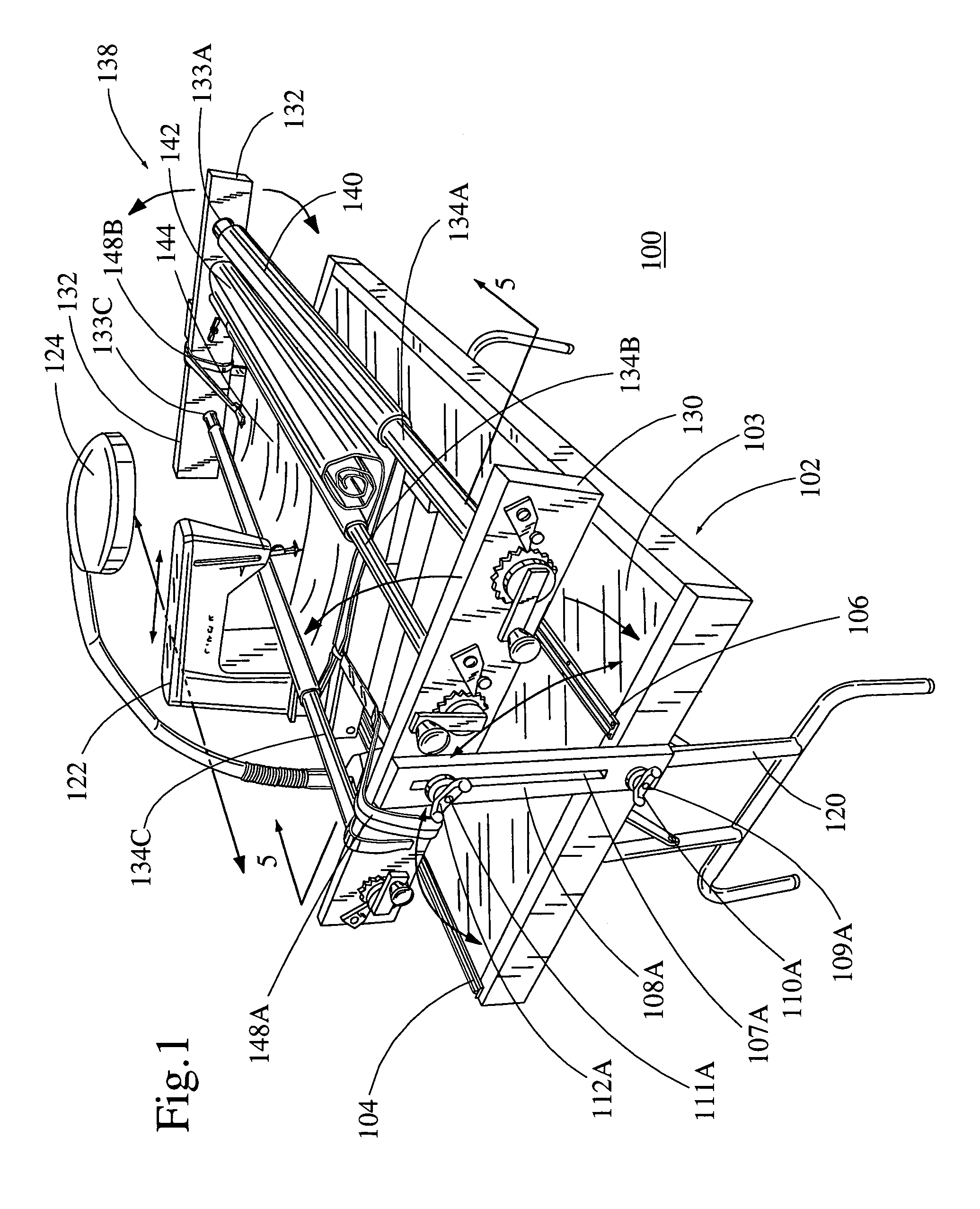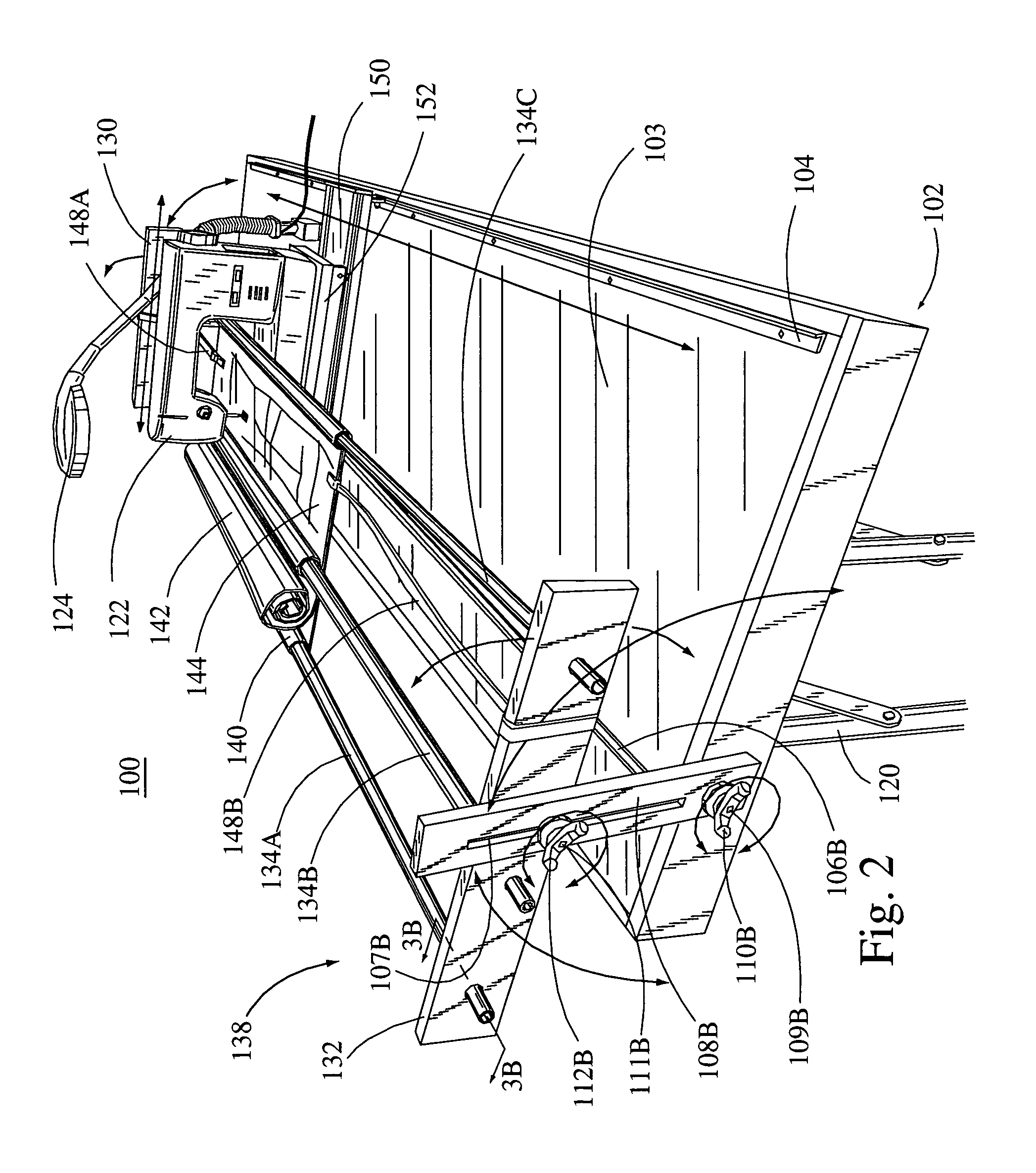Adjustable quilting machine
a quilting machine and adjustable technology, applied in the field of quilting machines, can solve the problems of large work space, cumbersome and laborious process of manipulating large quilts with respect to stationary sewing machines, and require many hours of work
- Summary
- Abstract
- Description
- Claims
- Application Information
AI Technical Summary
Benefits of technology
Problems solved by technology
Method used
Image
Examples
Embodiment Construction
[0033]In the following description, numerous specific details are set forth to provide a more thorough understanding of the present invention. However, it will be apparent to one of skill in the art that the present invention may be practiced without one or more of these specific details. In other instances, well-known features have not been described in order to avoid obscuring the present invention.
[0034]Referring first to FIGS. 1 and 2, quilting apparatus 100 includes a table 102, a quilting rack 138, a vertical support 108A, a vertical support 108B, and two or more legs 120. Table 102 is supported on legs 120. Vertical support 108A and vertical support 108B are rotatably secured to table 102 by a wing nut 110A and a wing nut 110B respectively. Wing nut 110A and wing nut 110B are secured to a bolt 109A and a bolt 109B respectively. Vertical support 108A,B may be secured by a type of a fastener that allows vertical support 108A,B to rotate about such fastener, such as wing nut 110...
PUM
 Login to View More
Login to View More Abstract
Description
Claims
Application Information
 Login to View More
Login to View More - R&D
- Intellectual Property
- Life Sciences
- Materials
- Tech Scout
- Unparalleled Data Quality
- Higher Quality Content
- 60% Fewer Hallucinations
Browse by: Latest US Patents, China's latest patents, Technical Efficacy Thesaurus, Application Domain, Technology Topic, Popular Technical Reports.
© 2025 PatSnap. All rights reserved.Legal|Privacy policy|Modern Slavery Act Transparency Statement|Sitemap|About US| Contact US: help@patsnap.com



